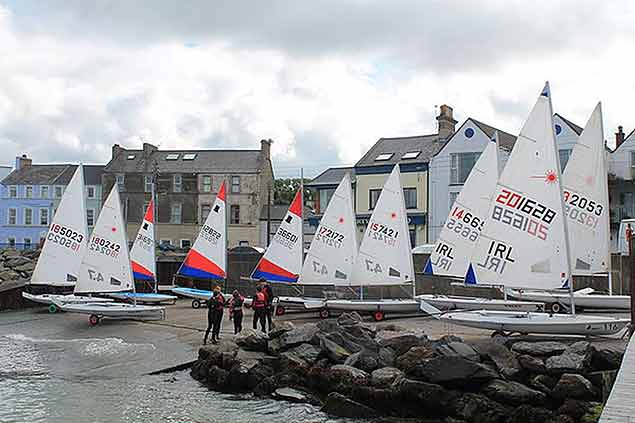Displaying items by tag: Holywood Yacht Club
In all last year’s celebrations of the 150th Anniversaries of Royal Ulster Yacht Club and Carrickfergus Sailing Club on Belfast Lough, it was generally overlooked that neither is the senior club on the lough, even though both were founded way back in 1866 writes W M Nixon.
But now friendly little old Holywood Yacht Club, with its hospitable clubhouse and drying anchorage close east of Belfast itself, no longer needs to draw attention to the fact that it was founded in 1862, even if that clearly makes it the daddy of them all. For on the last Saturday night of March 2017, Holywood Yacht Club put itself in a league of its own as it was graced with the presence of 71-year-old singer-songwriter Sir George Ivan Morrison OBE. And he was so keen to do what he does best, which is to sing his heart out with his own unique version of soul music and rhythm and blues, that it made for an incredible night.
The occasion was a semi-surprise charity gig which has already become – after just ten days - a piece of rock and roll legend. It was a fund-raiser for the Marie Curie hospice in East Belfast in memory of the late Billy Deane. His old mates laid it on in style, and the bands from times past (in some instances, times very long past) who joined the show included Inis Mor, the Alan McKelvey Blues Band, the Leah McConnell Band, Lee Hedley’s Ram Jam, George Jones and Friends, and the Pikestone Preachers.
With a line–up like that, the audience felt they were more than getting their money’s worth for tickets which had cost just £10. It has to have been the best tenner they’ve ever spent, for next on stage was the Monarchs, who had been at the top of their popularity in the early 1960s.
 The tide’s in, so the sailors are out and about. Toppers and Lasers in strength on Holywood YC’s launching ramp at high water. Photo courtesy HYC
The tide’s in, so the sailors are out and about. Toppers and Lasers in strength on Holywood YC’s launching ramp at high water. Photo courtesy HYC
 Van Morrison in full kit at the Theatre Ace Hotel near the other Hollywood in Los Angeles on St Patrick’s Day, just eight days before he made his unexpected appearance at Holywood in County Down
Van Morrison in full kit at the Theatre Ace Hotel near the other Hollywood in Los Angeles on St Patrick’s Day, just eight days before he made his unexpected appearance at Holywood in County Down
At that time their lead singer was a very young Van Morrison. But he left soon after an early 1960s tour of Germany to go solo or have his own band. We can remember him building his career with anything that was on offer, including performing for friends at parties in little houses hidden among the rolling hills along the west shore of Strangford Lough, around 1966 and ’67.
An unreal feeling of those days of fifty and more years ago will have permeated Holywood Yacht Club when the legend stepped up on stage to be re-united with the Monarchs for the first time in 54 years. He gave it his best with his first number being his own version of Sweet Little Sixteen as a tribute to the recently departed Chuck Berry. Along with Van Morrison, the original Monarch survivors Billy McAllen, Roy Kane and George Jones were getting the support of Mervyn Crawford on saxophone and Kevin Brennan on keyboards.
A new standard has been set in sailing club entertainment – has any other club ever had Van Morrison on stage?
To talk numbers, Roy Kane quipped that the originals between them provided 355 years of rock and roll stage experience. The money raised had been just £1,600, but that was before anyone knew Van the Man was on his way. Modest funds perhaps, but the great memories are now purest priceless gold. And in a year’s time, just about everyone for miles around will somehow find they well remember being there…
Holywood Yacht Club
Holywood Yacht Club is a Recognised Teaching Centre (RTC). As such it is permitted to run RYA Courses using qualified RYA Instructors and standards are maintained by regular inspections.
Qualifications gained on RYA courses are widely recognised.
The Club welcomes new members of all ages and is well known for being family-friendly and down-to-earth. Throughout the year members organise an entertainments programme which centres around the club-house bar and hall with their fabulous views over Belfast Lough. Events have included barbecues, lectures, live music and quiz nights. Everyone is welcome.
For further information email: [email protected]
Holywood Yacht Club, The Esplanade, Holywood, Co. Down. Email: [email protected]
(Details courtesy of Holywood Yacht Club)
Have we got your club details? Click here to get involved
























































